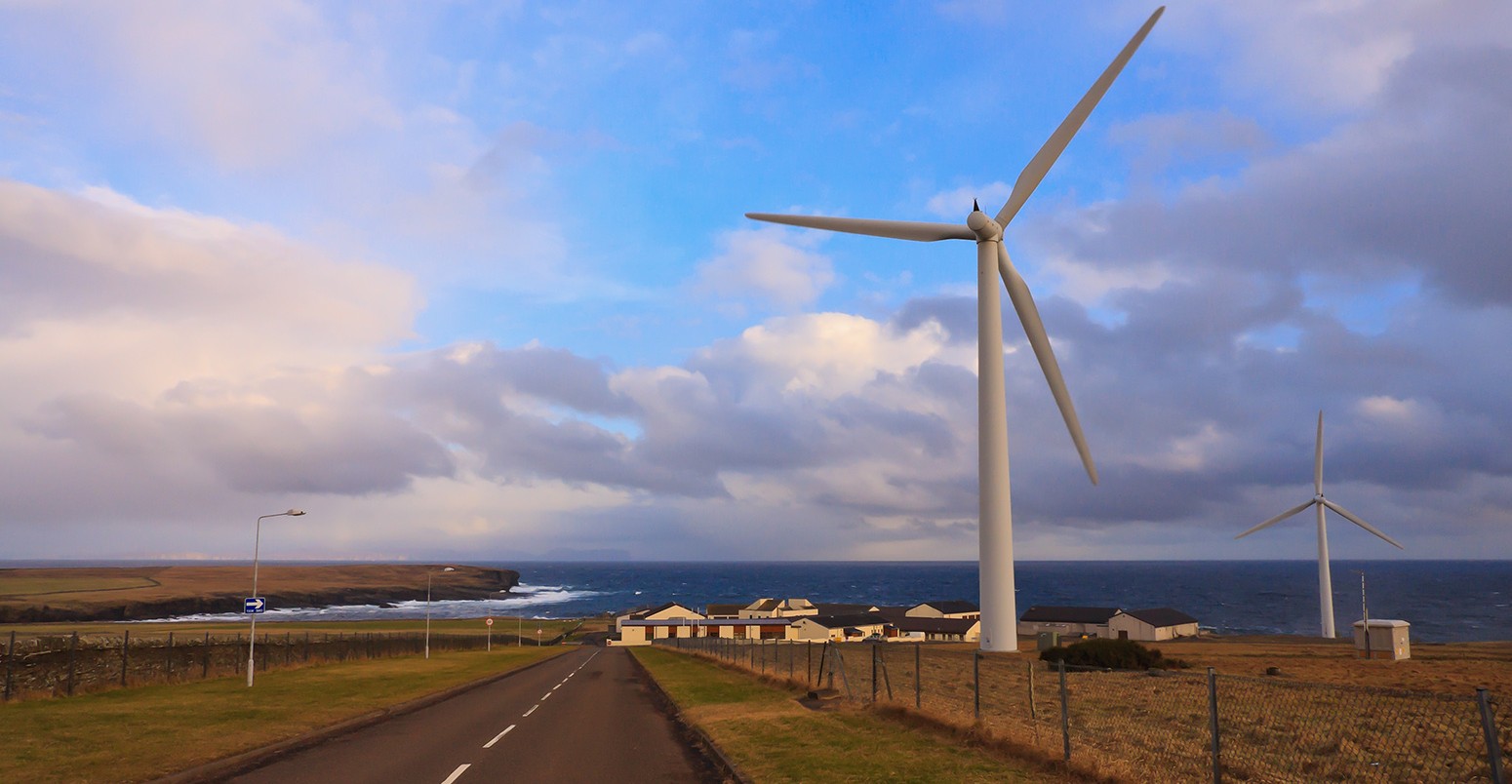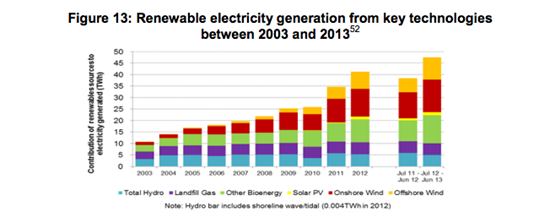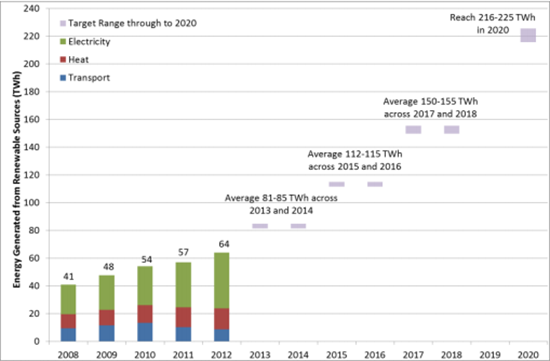
When the UK agreed to ramp up renewable energy supplies by a factor of eight, energy commentators were skeptical about whether the target was achievable. Six years later, the country could defy expectations: according to new government figures, it’s on track to hit the target.
Government officials were reportedly horrified in 2007 when the then Prime Minister, Tony Blair, signed the UK up to a European Union target to source 20 per cent of the continent’s energy from renewables by 2020. Perhaps that’s not surprising: in 2007, the UK generated just 1.8 per cent of its energy – or 5.6 per cent of electricity – from renewables, so meeting the target would require a big leap.
A lot’s changed since then, however. The latest iteration of the governnment’s renewable energy roadmap, out this week, suggests the UK is on track to hit its country-specific target of generating 15 per cent of its energy from renewables by the end of the decade.
But before the government gets over-confident, it’s worth remembering there’s a long way to go yet.
Significant growth in renewables needed
The UK had signed up to a significant challenge – perhaps more than Blair realised at the time. According to the Renewable Energy Association, renewables would have to grow at a rate of 16.5 per cent a year to get there.
It certainly focused minds in government. Two departments were merged to create the Department for Energy and Climate Change in 2008, in the hope of creating a ministry equal to the task.
The department’s first head, Ed Miliband, launched a renewable strategy in July 2009. The strategy set an overarching vision for how the UK could grow its renewable sector over the next decade and achieve the 15 per cent target.
His successor Chris Huhne finally set the ball rolling in reality when he launched the renewable energy roadmap in 2011. The roadmap aimed to set out a “comprehensive suite of targeted, practical actions” for how to get there – and to monitor progress.
A decade of growth in renewables
Fast forward to 2013 and the latest update of the roadmap shows just how much renewable energy has grown. The amount of electricity the country generates from renewables has increased by a factor of four over the last decade and nearly doubled in the three years since 2010:
Source: UK renewable energy roadmap, update 2013. Published by DECC on 5 November 2013.
There’s been a lot of change in the last year alone. Between July 2012 and June 2013, the country’s ability to generate power from renewables grew by 38 per cent to 19.5 gigawatts (GW).
In the second quarter of 2013, the UK generated 15.5 per cent of its electricity – or more than four per cent of overall energy supply – from renewable energy.
On track to meet the renewables target?
The government describes its progress toward the 15 per cent target as “very good”. It calculates that 4.1 per cent of UK energy consumption came from renewable sources in 2012 – greater than an EU interim target of 4.04 per cent.
In 2011 and 2012, the UK “achieved an average of 3.94 per cent”. This is within the margin of error for the interim target, the government says.
Speaking at a renewable energy conference earlier this week, energy minister Ed Davey was optimistic about the country’s chances of meeting the EU 2020 target.
Renewable energy industry sceptical about hitting the target
The UK’s renewable energy industry isn’t celebrating just yet, however.
In July, the European Renewable Energy Council pointed out that the UK remains in 25th place out of the 27 EU member states in terms of the amount of energy it generates from renewables. This perhaps isn’t that surprising, as the UK was starting from such a low base.
In a press release in July, the REA was less than optimistic, describing the UK’s chances of meeting the 2020 target as “remote”. Its chief executive said there had been a “steep drop” in decisions to lend money to renewable projects, and changes in government policy would “inevitably” lead to a hiatus in growth. It called for more work from the government to build confidence in the industry again.
Political certainty needed (as always)
Meeting renewables targets and – more significantly – creating a viable low carbon sector in the UK can only happen if investors are confident the country is a good place to invest. Government policies have to work, and the political landscape has to be stable enough to convince investors to stick around for the long term.
After undergoing a tortuous passage through parliament, the government’s planned reform of the electricity market is due to be published and implemented by the end of the year. This should help – so long as nothing else changes.
The country’s other trade industry group RenewableUK says Ed Davey’s support for the industry will help. It is also pleased that following “a certain amount of mixed messaging from some parts of Government”, the roadmap commits to a significant expansion of onshore and offshore wind.
In the past, ministers have suggested that the UK may only have eight GW of offshore wind by 2020. But the update says the government now envisages twice as much – 16 gigawatts (GW) – by the end of the decade. Renewable UK says support for a 16GW target will increase confidence in the sector and make growth easier to deliver.
But Davey’s support isn’t everything. There’s division in parliament over the UK’s energy path. While the energy minister – and the deputy prime minister – are apparently batting on behalf of renewables, key Conservative figures in the government are highly critical of the sector.
Political attacks on renewable energy – particularly centred around the impact of subsidies on bills – is likely to continue. If these derail confidence in the sector, bodies like the REA fear it’s a lot less likely that the government will hit its EU target.




